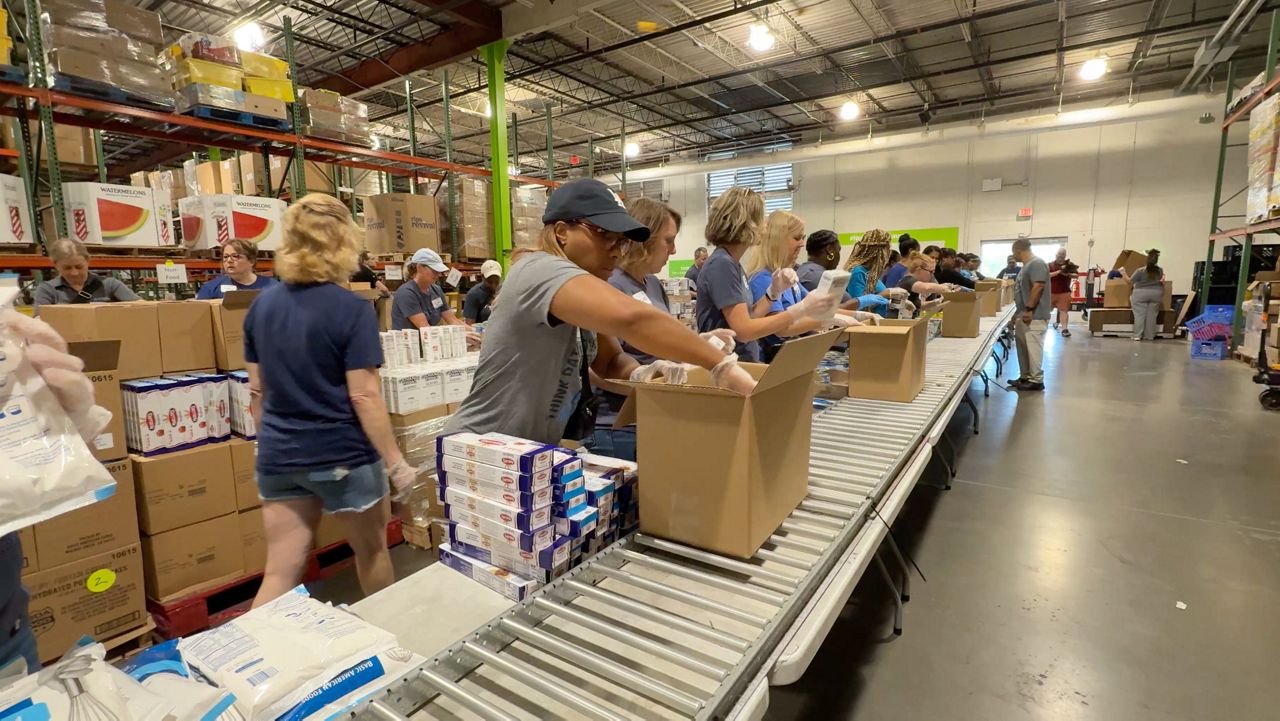RALEIGH, N.C. — The U.S. Department of Agriculture is ending its annual survey that tracks hunger in the country, despite the rise in food costs.
Here in North Carolina, where more than 600,000 people face food insecurity, local organizations like The Food Bank of Central and Eastern North Carolina say the cuts could affect how they can serve families in the state.
What You Need To Know
- The 30-year-old Hunger Survey measured food insecurity across the country but will no longer be conducted
- The Food Bank of Central & Eastern North Carolina says more families are turning to them as grocery prices continue to rise
- The final report is set to be released on Oct. 22
- Without federal data, organizers say it may be harder to measure the needs of communities across the state
At the Food Bank of Central and Eastern North Carolina, dozens of volunteers spend hours packing boxes with bread, milk, meat and canned goods, some essentials for families who can’t afford to purchase them on their own.
Here in North Carolina, officials say over 600,000 people face food insecurity. That’s why staff and volunteers say the timing couldn’t be worse.
Volunteer Cathy Engel says it’s not just about packing the food, but building a connection with a family even if it’s brief.
“Meeting all the people that come in and talking to them, that’s what makes me want to continue to come,” Engel said.
She says that in her five years of service she’s seen the need for food increase, but supplies are decreasing.
“We’re much more limited in what we give out, and even what the food shelves are limited in, what they’re allowed to get from this distribution center,” she said.
Vice President Jason Kanawati Stephany agreed, saying that the USDA’s decision could cause more harm than good to communities in need.
“Our pantries are seeing near unprecedented need. So we don’t need that government data to validate that experience,” Kanawati Stephany said. “But here’s where the government data is vital. It’s vital for us to make decisions about where we invest our resources. And more importantly, it tells government leaders where resources and investments are needed.”
“Trends in the prevalence of food insecurity have remained virtually unchanged, regardless of an over 87% increase in SNAP spending between 2019-2023,” the USDA said in its announcement.
But volunteers aren’t giving up, and entire organizations like Blue Cross N.C. are sending employees to help meet the growing need.
Lori Taylor, health food director at Blue Cross N.C., said it’s important to step away from everyday tasks and give a helping hand.
“This is the way that we can all make an individual contribution together,” Taylor said.
Engel says they’ll continue to show up.
“It’s hard to be hopeful, but this place gives me hope,” she expressed.
In 2023, 47 million people lived in food-insecure households, according to the USDA. Of those, nearly 14 million were children.
The survey has been published annually for 30 years, throughout both Republican and Democratic administrations.
The last report is scheduled to be released on Oct. 22.






























